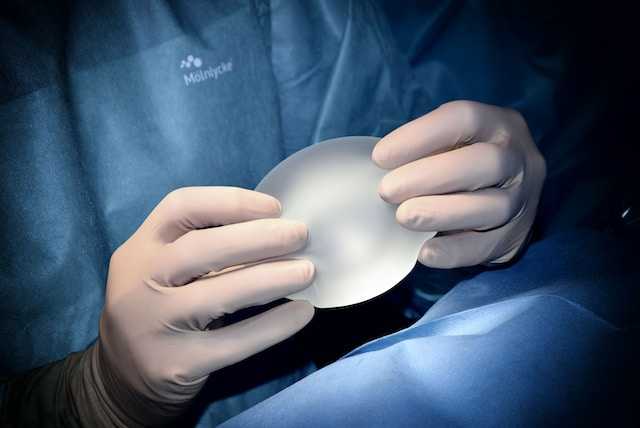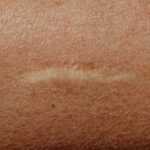Published by Dr MIguel Fernadez Calderón: 15/12/2023
The most demanded surgery among women is mammoplasty. There are millions of women around the world who undergo surgery to have larger and firmer breasts. If you are interested in this type of procedure, it is essential to know as much information as possible before going to the operating room. With this in mind, below you will find everything you need to know about breast augmentation. breast augmentation: Options and care.
What is breast augmentation?
Breast augmentation is the name given to surgical procedures aimed at increasing the size and improving the shape of the breasts, either through liposuction or the placement of breast implants.
Breast augmentation is performed on patients with small or sagging breasts, as opposed to breast reduction surgery.
Realistic expectations and results
When undergoing cosmetic surgery it is important to have realistic expectations regarding the results that can be expected, taking into account the initial physical condition of the patient. This type of surgeries help to achieve a more stylized body and a more contoured figure, which can increase the self-esteem of women, but it should always be remembered that the perfect body does not exist, and that no plastic surgery can offer these results.
Breast augmentation options
There are two ways to increase breast size, one is through the placement of implants and the other is by injecting fat extracted from other parts of the body.
In addition, there is the mastopexy in Madrid Spain which is the breast lift and can be complemented with the placement of implants.
Types of breast implants
As for the types of breast implants we can find, there are:
- Silicone implants: As their name indicates, they are made of silicone both on the outside and inside, since they are filled with silicone gel. It is possible to find them in different shapes and sizes, according to the taste and need of each patient, and the surgeon's recommendation. This type of fillings offers a more natural shape and sensation, similar to that of real breasts; in addition, it is unlikely that ripples or folds will appear. However, they are susceptible to filler leakage, requiring check-ups every five years or less.
- Saline implants: It is a silicone bag that is filled with saline solution or sterile salt water. The surgeon inserts the empty implant and places it in its position and then fills it, because of this the cut is smaller than in the silicone implant. Because of the liquid filling, it can ripple or wrinkle. There is also a modality of these implants known as structured, whose interior disposition helps the sensation to be more natural. In case of rupture, the salt water they contain will be absorbed by the body without any risk or consequence.

Breast augmentation with own fat
Breast augmentation with the patient's own fat is a cosmetic surgery that consists of extracting fat from an area of the patient's body, usually the abdomen, hips or thighs, and then grafting it to the breasts to increase their volume.
It is a technique that offers more natural results, is quite safe and is considered less invasive than implants.
Surgical techniques in breast augmentation
The methods used by surgeons for breast augmentation are subglandular implant placement and submuscular placement.
- Subglandular: This is the technique in which the breast implant is placed above the chest muscle, and is the most commonly used. In this modality the incision is located in the crease under the breast and the implant is placed behind the breast tissue. It is a relatively simple and safe procedure, in which the risks of complications are low.
- Subpectoral: When the implant is inserted behind the mammary muscle, it is called a subpectoral placement. In this case, the surgeon must make a cut under the pectoral muscle, to insert the implant through there; resulting in a more complex procedure. In spite of this, the results are more natural and the breasts feel firmer. There is the risk of encapsulation of the prosthesis.

Preparation for the surgery
The care taken before breast augmentation surgery can affect the final results. Hence the importance of planning and consulting with a specialist to ensure the success of the procedure.
Initial consultation and medical evaluation
It is essential to verify that the patient's general health is in optimal condition prior to surgery. A physical evaluation should be performed, as well as laboratory tests. This can be done by the surgeon himself or by a general practitioner.
Afterwards, the plastic surgeon will be in charge of the esthetic part, in which he will talk to the patient about the procedure itself, what it consists of, the benefits it offers, as well as the risks and complications. The doctor will indicate which is the most appropriate method for the patient in particular, and in case of using prosthesis, what is the size and shape that best suits the patient. In addition, he/she will give instructions and previous care.
Preoperative instructions
Some of the indications that the surgeon may give before surgery are:
Have a balanced and healthy diet. This helps the tissues recover better and faster.
Exercising frequently will make you feel better.
Avoid smoking, as it can slow down recovery and even cause complications.
Stop taking certain medications, such as aspirin.
Surgical process
Anesthesia and incisions
Breast augmentation surgeries, regardless of the technique chosen, are performed under general anesthesia.
Regarding the incisions, the surgeon's idea should be to keep the cuts as hidden and concealed as possible. The inframammary incision is made in the crease under the breast, the periareolar incision is made around the areola. The second is less visible, but has the disadvantage that it can damage nerves and blood vessels of the nipple, which would affect sensitivity.
Finally, there is the axillary incision, which is made to introduce the implant through the armpit, and although it is the least visible of the three, it is the most complicated and there is a greater risk of infection.
Implant placement and incision closure
After making the incisions, the doctor will proceed to create a pocket or space through which the implant will be inserted, according to the selected technique. Either in front or behind the muscle. In the case of the saline implant, this will be the moment to fill it.
Upon completion, the incisions must be closed, either using sutures, skin adhesive or surgical tape. The cuts will take a few weeks to heal, it is important to follow all the indications for the process to be successful and fast.
Recovery and postoperative care
Immediate post-surgery care
The discomfort felt during the first hours after surgery is controlled with medications prescribed by the surgeon, such as anti-inflammatory and analgesics. After 24 hours the bandage is removed and replaced by a compressive garment to keep the breasts in place.
Among the care after a breast augmentation surgery, we cannot forget the cleaning of the area, and for this only water and a mild soap and dry well, to prevent moisture from affecting the incisions.
The patient will also need the support of a friend or family member to accompany him/her and help with household chores. During the first days, the patient should avoid making sudden movements, lifting heavy objects or any type of physical exercise.
Long-term follow-up and reviews
Follow-up consultations after breast augmentation surgery allow the specialist to monitor the patient's progress. To know the progress, the patient should schedule appointments once a month for the first six months, and then twice a year.
Risks and complications
Common complications and management
- Infections, which manifest with swelling, pain, redness. To control it is essential to consult with your surgeon.
- Encapsulation of the prosthesis. If you suspect this, see your surgeon immediately, a second surgery may be required.
- Loss or variations in breast sensitivity, which may be permanent or temporary.
- Implant rupture, although it is unlikely, there is a possibility. It becomes evident with the change of shape and size of the implant and a lot of pain. In these cases surgery is needed to replace the implant.
Prevention and treatment of complications
The best way to prevent problems during and after a breast augmentation is to choose a qualified plastic surgeon with proven experience in the type of procedure. It is also important to clarify all doubts, care and risks before the surgery.
Finally, remember that following the specialist's instructions to the letter will help you to have a better and faster recovery, thus guaranteeing the best results.
Frequently Asked Questions (FAQs)
Duration and cost of surgery
This type of procedure takes between two to four hours, depending on the type of implant and the technique chosen. These factors also influence the cost, but in general the surgery ranges between 4000 and 8000 euros.
Life expectancy of the implants
There are several factors that can have a direct impact on the lifespan of the implants, such as the type and size, as well as where it was placed and the patient's lifestyle. However, in general we can say that the duration can be between 10 and 20 years.
Conclusion
Breast augmentation surgery is a solution for women of virtually all ages, who seek to enhance their breasts, to have fuller and firmer breasts. It can even be combined with other procedures or be part of mommy makeover surgeries, to achieve a more defined and contoured silhouette. To achieve an effective result it is essential to choose a good surgeon, who knows the best techniques and recommends the best type of implant for each particular case.
It is important to remember that any plastic surgery carries risks and potential complications, of which the patient should be informed before entering surgery. Postoperative care is also essential to maintain the patient's good health and guarantee successful results.
Sources:
https://my.clevelandclinic.org/health/treatments/11024-breast-augmentation
https://www.brooksplasticsurgery.com/blog/which-type-of-breast-implant-is-best
https://www.topdoctors.es/articulos-medicos/tipos-de-implantes-e-incisiones-en-la-operacion-de-aumento-de-mamas#








